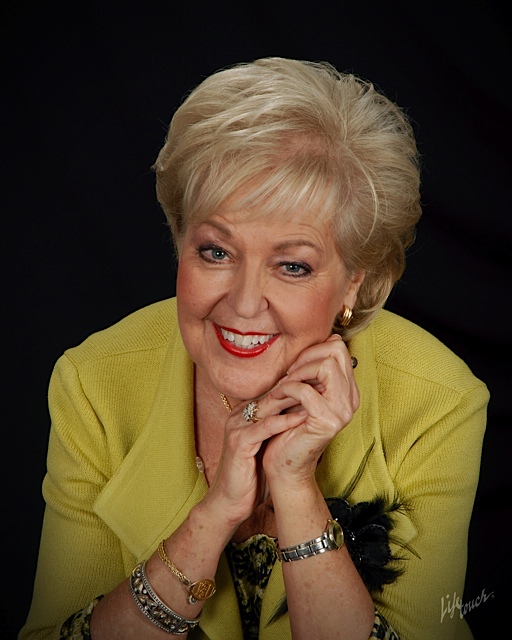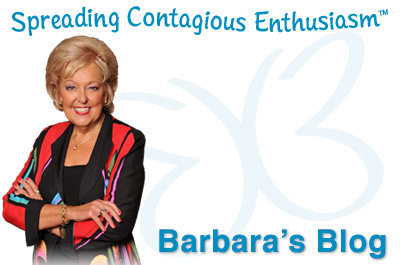Barbara A. Glanz, CSP, CPAE
If you want to become the greatest in your field, no matter what it may be, equip yourself to render greater service than anyone else.
Clinton Davidson
“It’s not about you!” That was the first sentence of Rick Warren’s book, “The Purpose Driven Life” which has since become one of the best selling books of all time. As employees and managers, we market our product, yet the key to lasting relationships with our clients is our Service. How are we, each time we interact with a colleague or a client, demonstrating that it is “not about us?”
In today’s market, clients want high value, and high value includes extraordinary service. No longer do they simply want a satisfactory product. They want long-term, authentic relationships based on shared commitment to the organization and its mission.
The first step in serving our clients at a higher level is to examine our own mission in this business. Whenever I work with a group of leaders in any organization, I ask them this gut-level question, “Are you into Power or are you into Service?” Ask yourself that same question because your clients will quickly perceive the answer.
I have discovered a simple framework for understanding practical ways to keep the focus on service in my work and in my life through Ken Blanchard’s book, “Lead Like Jesus – Lessons From the Greatest Leadership Role Model of All Time.” He suggests that someone who is truly focused on serving others should examine their Heart, Head, Hand, and Habits.
QUESTION: Am I truly in this business to serve my clients or am I doing this solely for the money?
The highest reward for a man’s work is not what he gets for it but what he becomes by it. John Ruskin
HEART:
- Our values come from this place—what do we stand for? What are the guiding principles for our life? Our passion for our product or service should be based on our foundational values. If we focus on what the public sees, external appearances rather than internal realities, the result is an illusion.
QUESTION: Is there a difference between the image I project and what I do when no one is watching?
Then we must be certain that our values align with those of our clients in order for our message to have the greatest impact. My friend, John Blumberg, CSP, shared with me that he had turned down a speaking engagement because the values of the organization and the products they marketed were in conflict with his personal values. Sometimes we may need to help our clients clarify those values, both in their organization and in their personal lives.
QUESTION: Am I driven (satisfying my own passion) or am I called (passionately helping others to become the best they can be) ?
Clarifying your values is the essential first step toward a richer, fuller, more productive life. Carl Rogers
- HEAD:
Our knowledge and beliefs come from this place—what is your mission or purpose in life? One way we can serve our clients at a deeper level is to examine clearly what our own gifts and beliefs are and to be sure they are consistent with our actions. Then it is important to spend time respectfully understanding the culture and beliefs of our clients.
QUESTION: Does my message mirror my deepest beliefs or am I just giving a performance?
True happiness is not attained through self-gratification but through fidelity to a purpose. Helen Keller
HANDS:
- Our actions should reflect both our beliefs and our values. When they are incongruent, we confuse our clients and we lose their trust, thus diminishing the power of our message.
QUESTION: How are my actions, both at work and at home, supporting my beliefs and values?
There can be no happiness if the things we believe in are different from the things we do. Dr. Robert Conroy
HABITS:
These are the ways we stay connected at a deeper level to our attitude of service, whether through Mastermind or other support groups, reading, prayer, meditation, exercise, or other sharing relationships.
QUESTION: What am I doing to keep my own emotional bank account filled so that I may be fully present for my clients?
Have you found a role model to help you become a servant leader in all that you do? The most important thing is to develop a strategy that keeps you focused in a concrete way on how you can serve the client rather than yourself. Then you will be able to serve all people in your life on a deeper level and your business will soar.
The only ones among us who will be truly happy are those who have sought and found how to serve. Albert Schweitzer
The wonderful truth is that I could write about hundreds of employees and managers who are using their Hearts, Heads, Hands, and Habits to serve their clients in extraordinary ways. Thank you all for the difference you are making in this world!
ADDITIONAL SIDEBAR:
FOUR THINGS ALL CUSTOMERS WANT
British Airways did a study in 1973 that has been repeated hundreds and hundreds of times, and the results have been the same every time. They found that there were four things all their customers wanted:
1. Friendly, caring service–a focus on creating relationships beyond the business interaction. How are you showing friendly, caring service to your customers? Are you easy to work with or are you a prima donna? What kinds of extra things do you do for your customers, both internal and external? Remember, “caring” comes from the heart. Are you viewing your customers as valuable human beings or simply numbers to be served?
2. Flexibility–they want you to jiggle the system for them. How are you demonstrating flexibility with both your internal and external customers? Do you work with them to reach the objectives they want by offering creative options, even if you cannot do exactly what they ask for?
3. Problem solving and they want it by the first person they speak to. Are you easily available to your customers? Are you willing to help your customers solve problems even when it has nothing to do with the professional part of your work?
4. Recovery when a mistake is made. There are three parts to recovery–apologize sincerely, fix the mistake, do something extra, and then follow up to make sure the customer is happy. How do you recover when a customer is not satisfied? Do you have a recovery program in place with your staff?
To learn more about Barbara’s customized speaking and training, go to www.barbaraglanz.com/programs



